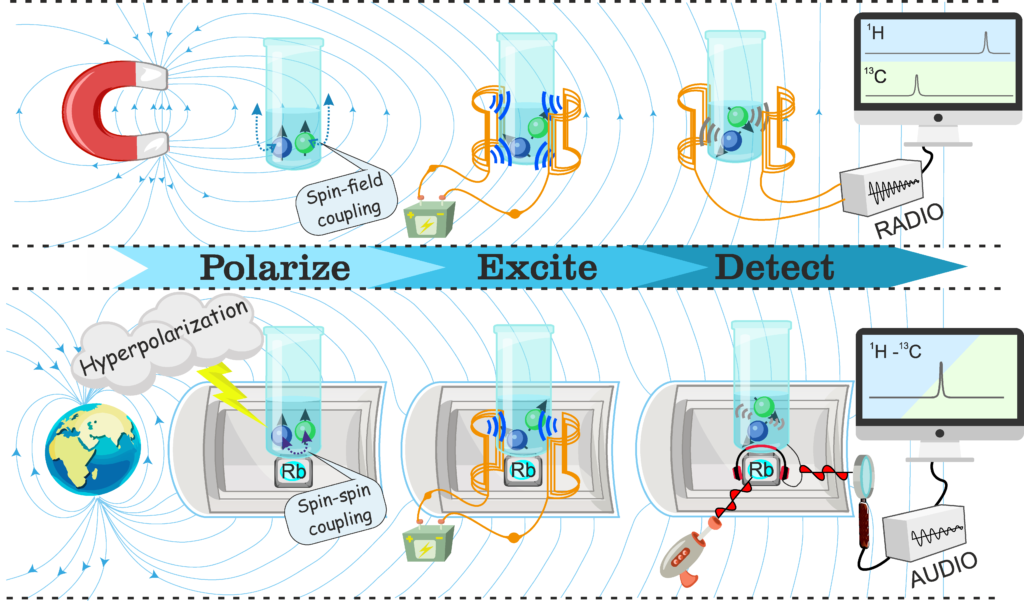Zero- and Ultra-Low Field NMR

What is ZULF NMR?
Nuclear magnetic resonance (NMR) is a powerful technique employed in many areas of modern science and industry. While a seemingly indispensable element of NMR is a strong (>5 T) magnetic field, recent progress in physics and chemistry have enabled detection of NMR signals at ultra-low and truly zero magnetic fields. This completely reverses conditions under which spin-dynamics are investigated and gives access to information unavailable in conventional NMR. A secondary horizon is microscopic low-field magnetic sensors that probe NMR signals of a single molecule, and provide interesting information about molecular dynamics and structures not accessible with conventional NMR. The address of specific molecular sites is a step towards realizing single-molecule quantum information storage. In project ZULF, for the first time, we plan to connect experts of non-conventional NMR to create a network of zero and ultra-low-field (ZULF) NMR science. We will gather and synergize scientists working on NMR J-spectroscopy, NMR hyperpolarization, ultra-precise and small-scale magnetometry to enhance the field and train a new generation of NMR researchers. Close collaboration with industry will address important challenges of modern NMR. Through frequent meetings, secondments, workshops, and a summer school the early-stage researchers (ESRs) will receive a unique training program on the most modern and advanced aspects of ZULF NMR that is unavailable in any current university course. The network covers a diverse range of projects aimed at bringing the technique to the next level, including spectrometer development, single-molecule detection, analytical chemistry, medical contrast agent imaging and exotic-physics searches.

The Scientific Aspect
The project aims at the development, exploration and application of methods of nuclear magnetic resonance (NMR) in the regime of zero and ultra-low magnetic fields (ZULFs). Under such experimental conditions the dynamics of nuclear systems is determined by intra- and intermolecular interactions and not by interaction with external magnetic fields. This opens avenues for investigation of nuclear spin system under unique experimental conditions and triggers activities in fields yet unavailable to NMR. The exploration will be based on recent advances in three so-far largely separate areas of research: hyperpolarization techniques, NMR spectroscopy based on indirect spin–spin interactions (J-spectroscopy) and optical magnetometry.


